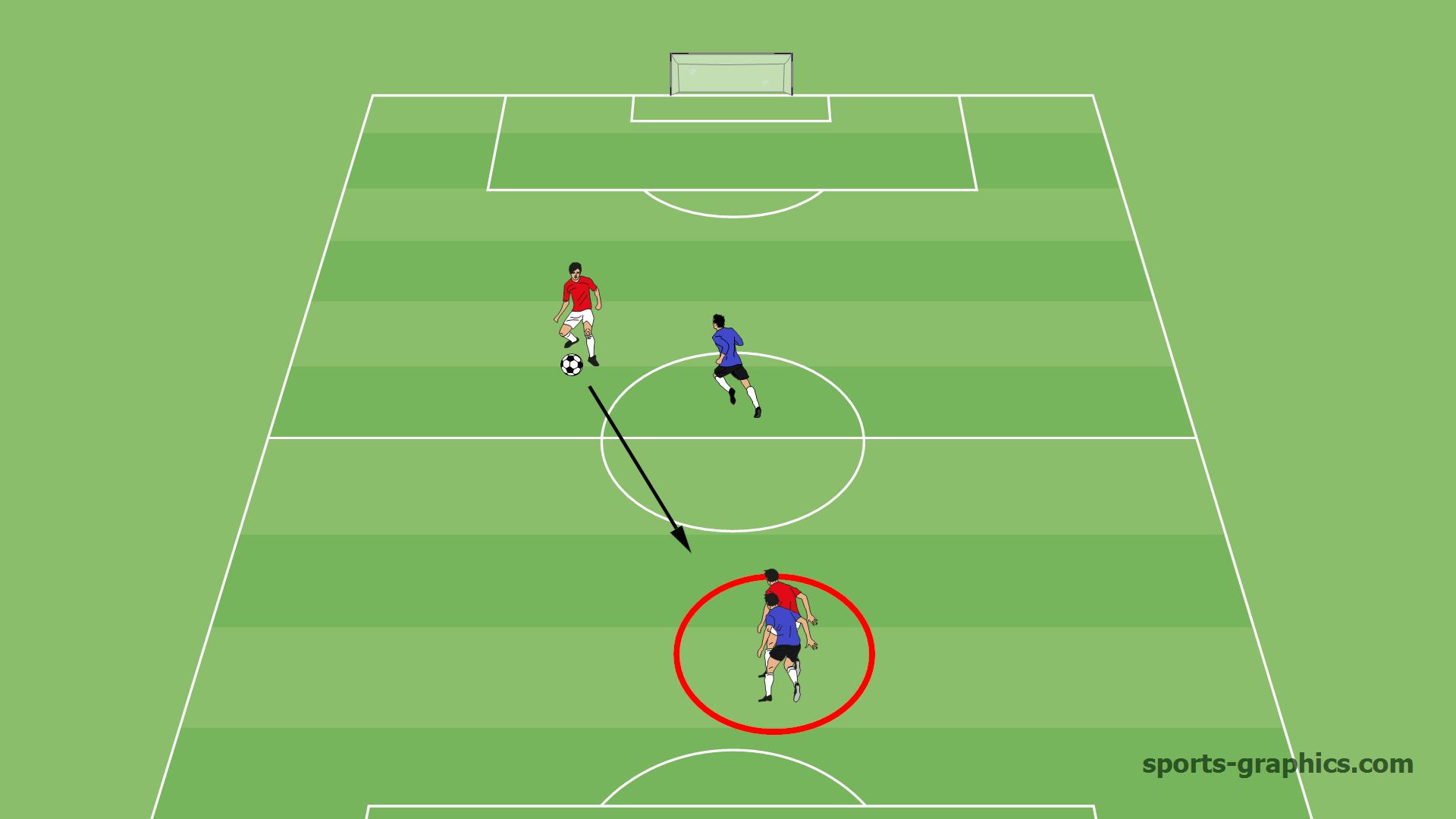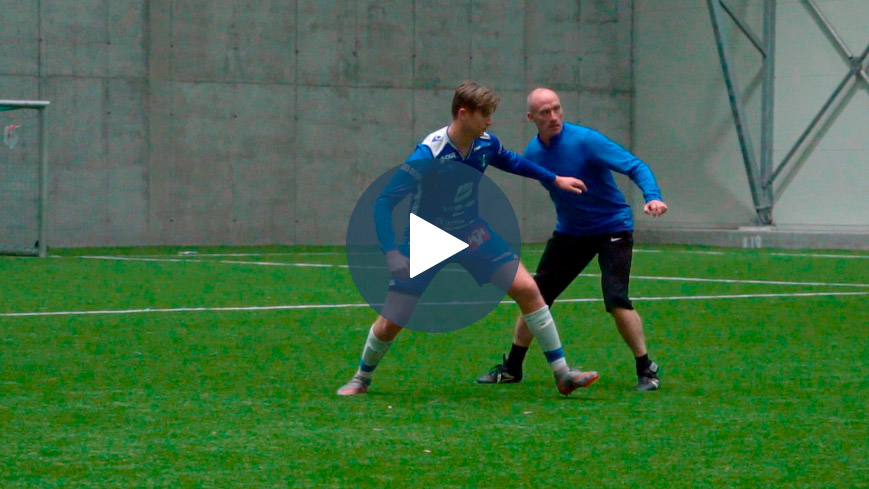Situation
A midfielder from the opposing team has the ball and is in a position to play a pass to a wrong-facing forward in the space between the back four and the midfielder. You are playing the position of centre back, marking the attacker and trying to solve this situation in the best possible way.

Figure: Giske Defending. Credit: www.sports-graphics.com
You are a centre back, marking the attacker and trying to solve this situation in the best possible way.
Challenges
Just before the ball is played, the attacker moves back into your body and prevents you from doing anything. He or she can successfully receive the ball in a central and dangerous area 30 meters from goal.
There are three main reasons as to why you may find yourself experiencing difficulties in these situations:
- You are positioned behind the attacker.
- You will find it difficult to move rapidly in the longitudinal direction.
- You have minimal freedom of movement, and it is the attacker who is in control.
The attacker moves back into your body and prevents you from doing anything.
Common Mistakes
The common mistakes defenders make in this position are the same as those described previously:
- Your working conditions are poor. The majority of players unconsciously adopt the frontal defending position. This is not a good technique in this situation because the strength of the frontal defending position is that it allows you to work sideways, but not in the longitudinal direction.
- You have to protect yourself and obtain the space and freedom you need to move.
- You miss an opportunity to actively influence the game through implementing your own game plan.
Your working conditions are poor. The majority of players unconsciously adopt the frontal defending position…
Solutions and Tips
Your aim should be to break the pass in front of the attacker or to impede the player as he or she is in the process of receiving the ball. This task can be achieved by taking the following actions:
Tip 1. Work on the player’s “ball side”
Position yourself on the ball side and close to the attacker before the pass is played. Avoid body contact. If the attacker tries to make body contact, move away.
Tip 2. Choose the chase defending position and assess the position risk
Select the chase defending position and remain in motion. Adjust your position if necessary. You now have to evaluate your position. If, for example, you are positioned too far ahead of the attacker, he or she may receive the ball towards the other side and put you out of action. If you position yourself too far behind the attacker, it will be easier for the attacking player to receive the ball.
Your aim should be to break the pass in front of the attacker or to impede the player as he is in the process of receiving the ball.
Tip 3. Ensure good LFT quality
Be sure to maintain a wide leg position with good LFT (Leg, Feet, Torso) quality and lower your centre of gravity slightly. This will allow you to get a good start when you do move by positioning your body in a manner that allows you to exert strong pressure against the ground as you start to travel.
Tip 4. Be open minded (do not decide in advance)
Do not gamble if the situation does not allow it. Position yourself such that you can adopt any of four possible solutions:
Adopting the chase position will make it much harder for the attacking player.
- Run in the defence direction if you are alone in a 1v1 situation and the ball is played into the space behind you.
- Snatch the ball in front of the attacker.
- Win the ball using a slide tackle (lowering your point of gravity is important)
- If your opponent successfully shields the ball, break the movement and reposition yourself on the attacker’s other side to stop him or her turning.
The attacker will need to play extremely skilfully, because he has no control over your movements.
The Result
Adopting the chase position will make it much harder for the attacking team to involve the player you are marking and you will have a good chance of winning most of the duels.
At the very least, the attacker will need to play extremely skilfully to receive the ball because he will have no control over your position and movements.

